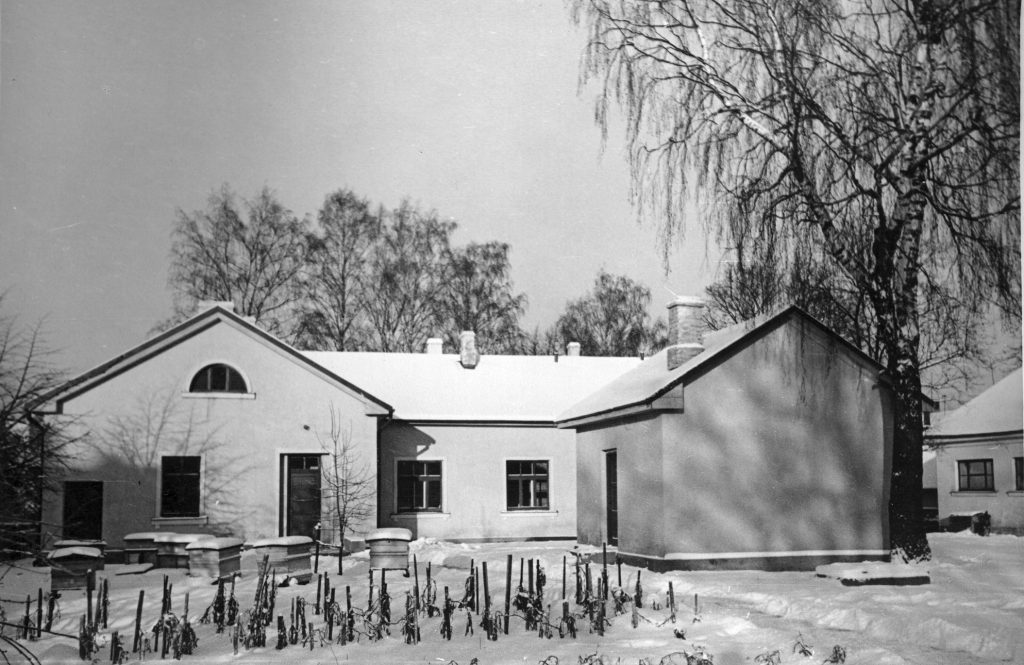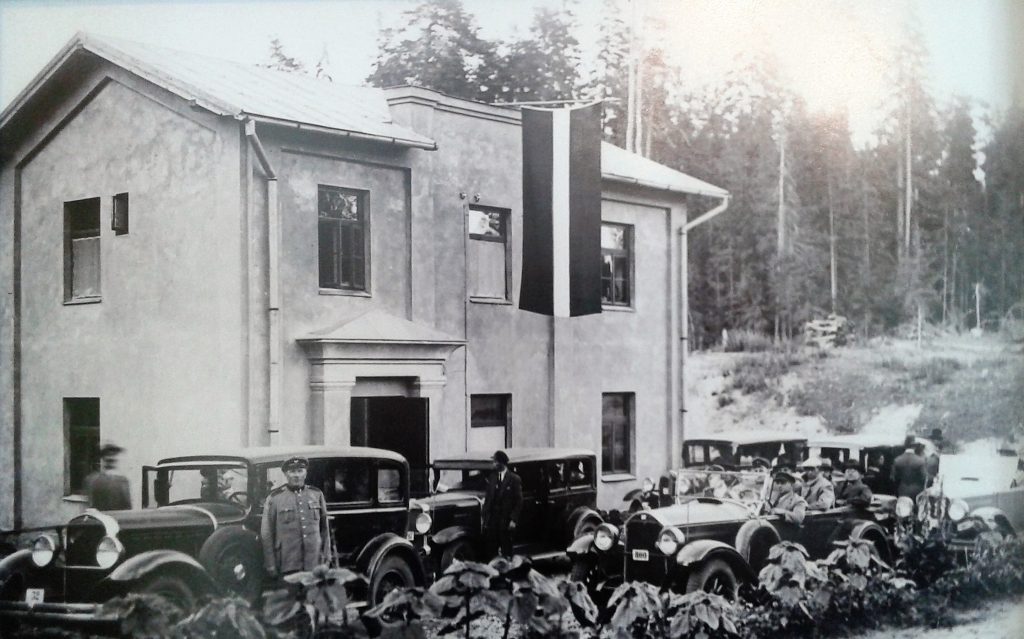The beginning of the history of the Scientific Institute of Food Safety, Animal Health and Environment “BIOR” traces back to forties of the 20th century when the Veterinary Bacteriological Laboratory of the Republic was founded. In the course of time, various reforms were implemented in the result of which competences and areas of activity of the laboratory extended.
In 2009, the restructuring of Food and Veterinary Service (FVS) and state agency “Latvia Fish Resource Agency” was made. The institute took over the functions of the National Diagnostics Centre of the FVS and a part of the functions of Latvia Fish Resource Agency. On January 1, 2010, the Institute started working as the Scientific Institute of Food Safety, Animal Health and Environment “BIOR”. Currently, the Institute “BIOR” is the leader of its area of competences in the region with an excellent research and technical as well as developed human resource base.

The beginning of the establishing the National Diagnostic Centre is linked with the period of time of Soviet occupation of Latvia. In 1940, the Veterinary Bacteriological Examination Laboratory was established and some years later it renewed its work as Veterinary Bacteriological Laboratory of the Republic. In accordance with Order No. 42 issued by the Ministry of Production and Procurement of Agriculture Products of Latvia SSR on 12 February 1964, the Veterinary Bacteriological Laboratory of the Republic was renamed, and starting from 12 March 1964 it was named the Veterinary Laboratory of the Republic. Several departments were in the composition of the laboratory. They were Bacteriology, Serology, Virology, Pathological Anatomy and Morphology, Haematology and Leuko-zoology, Mycology, Parasite Diseases and Fish, Radiology, Chemical-Toxicological, Non-Contagious and Gynaecological Diseases, Epizootology, Accounting of Epizootic Situation, and Information and Forecasting departments. In a course of time, the approbation of new methods was performed and regional veterinary laboratories were developed.

In 1921, the Commission of Research of Waters in Latvia was established under Fishery and Fish Breeding Unit of the Ministry of Agriculture. Some years later, the Laboratory of Hydrobiology started performing its research; they made hydrological trips in Riga Gulf and studied salmon-type fish (salmon, whitefish and smelt) by analysing the structure of catch, growth of fish and their migration.
In 1929, the Fishing Laboratory was developed at the Fishing and Fish Breeding Department of the Ministry of Agriculture at the same time when fish farm “Tome” started its operation. The laboratory was supposed to provide efficient scientific basis for the operation of the new fish farm by developing intensive breeding of salmon-type fish in artificial reservoirs. The laboratory extended herring stick, eel growth and genders structures, plaice dissemination, research on fish population at the shores of Latvia, and it started studies on fishing equipment and the influence of the pollution of waters of the river Daugava, and started making regular publications of the summary of fishing statistics.
After the war, marine research was restarted in 1945 when on the basis of former Fishing Laboratory there was established Latvia branch of the Soviet Research Institute of Marine Fisheries and Oceanography (VNIRO) which made a foundation for systematic research of fisheries in Latvia within the framework of a special institute.

In the course of further development, Latvia branch developed into a powerful regional research centre Baltic Fishery Research Institute (BaltNIIRKH) (officially founded in 1962) with 4 large research vessels, several smaller vessels and cutters, rural research bases in Pape, Roja, Salacgriva and Parnu, 15 laboratories, including the Tallinn branch.

On 4th November, 1991, the Institute was changed into Latvia Fishery Research Institute (LZPI). Despite the fact that the range of activities performed by the Institute were considerably narrowed proportionally to financial possibilities of Latvia and direct needs for national fishery sector, the experience of the institute accumulated over the years, multi-annual scientific data basis and international recognisability of its studies permitted the institute to get involved swiftly in national and international management of fish resource of the Baltic Sea as a fishery research institute of an independent country and to develop close cooperation with fishing companies and public organisations as well as direct customer of the research: the State Fishery Department of the Ministry of Agriculture.

On 1st November, 2004, the institute started its work in a new quality: in the composition of state agency “Latvia Fish Resource Agency” which united Latvia Fishery Research Institute and seven state hatcheries – “Brasla”, “Dole”, “Kārļi”, “Ķegums”, “Pelči”, “Sērene” and “Tome”. The agency operated as a state institution under the Ministry of Agriculture. The aim of the operation of the agency was the following: on the basis of complex research and fish resource artificial reproduction to ensure fish resources and environmental condition for balanced and sustainable fishing and angling possibilities in waters of Latvia as well as in the Baltic Sea, Riga Gulf, and in inland waters. In the meanwhile the agency fulfilled all liabilities determined by the European Community for Latvia with regard to scientific research also in other areas in the Baltic Sea and in the Atlantic Ocean where fishermen from Latvia work. The agency ensures supplementation of fish resources within the framework of state programs by breeding maggots of valuable fish species and releasing fries in public water reservoirs. In accordance with its competence, Latvia Fish Resource Agency represented the interests of Latvia in the institutions of the European Commission and in international fishery organisations regarding the matters related to the examination of the condition of fish resources, their assessment and rational use, as well as supplementation of fish stock and biological diversity. The agency performs the following important functions: providing public services for breeding fish fries, performing fishery expert examinations, development of the regulations for the exploitation of water bodies for the purpose of fisheries, and in other matters falling within the scope of its competence, as well providing information to the society about both their activities and fish resources, their protection, breeding and use.
On 29 January 1927, the Fishermen Congress of Latvia made the decision on the construction of the first national centralized fish farm. The place chosen for the implementation of the project was at 4 km distance from Ķegums Station, in Vecmuiža forest district, in Tome Parish on the springs of Prūšupīte, opposite Ķegums rapids.
In 1929, the fish farm is put into operation. It consists of incubation department, office building and 3 ponds which provide water for the needs of the fish farm. It is planned in the fish farm to make artificial incubation and to release in waters of Latvia salmon, sea trout, whitefish, cisco and pike maggots. Already in the spring of 1930, Tome fish farm released more than 3 000 000 fish maggots in the rivers of Latvia.

In order to expand the state fish farming, there were the departments of the fish farm opened: in 1932 in Amata power staton, “Kārļi”, and in 1934 in “Pelči” near Kuldīga.
In 1935, substantial extension works are performed in Tome fish farm. After reconstruction, it is capable to accept for incubation up to 4 000 000 salmon and 11 000 000 whitefish and cisco spawn. After reconstruction, Tome becomes one of the most modern and recognised fish farms in Europe.
Already in 1938, “Tome” together with its branches releases in the rivers and lakes of Latvia about 2 000 000 salmon, 3 200 000 sea trout, 20 000 brown trout, 5 600 000 lake whitefish and 2 500 000 migrating whitefish maggots. Salmon and migrating whitefish were released in the rivers of Daugava, Gauja, Salaca and Venta. Lake whitefishfish were released in Višķi, Svente, Zīversa, Ričas, Burtnieki, Alauksts, Usma, Sasmaka and Zebrenes lakes.
In the period of time after the war, the fish farms were breeding single summer fries of Baltic salmon, as well as whitefish, sea trout, brown trout, as well as made experimental breeding of various species of sturgeon, zanders, and steelhead trout.
Starting from 1965, fish fries were fed with artificial food which provided a possibility to feed keep salmon and sea trout fries in reservoirs till the stage of smoltification.
In the period of time from 1979 till 1984, there were serious enlargement works performed in the fish farm, new departments were constructed, and a water pipe from the river Daugava was constructed. The fish farm triples its breeding capacity.
In the summer of 2009, fish farm “Ķegums” was added to Tome fish farm. The territory of the fish farm covers 115.4 ha, including 29.5 ha area of ponds.
Starting from 2011, partial reconstruction works were performed in fish farms “Tome”, “Dole”, and “Pelči”; with the support of the European Fisheries Fund there were recirculation type breeding departments developed and water supply system from the river Amata was reconstructed in fish farm “Kārļi”. Salmon breeding department of fish farm “Dole” was completely reconstructed. The reconstruction of pump house and heat insulation of salmon fry department was made in fish farm “Tome”. Stage 1 of project “The Development of fish breeding, research and education centre of fish farm “TOME”” was completed. In the result of the implementation of this project, there was aquaculture, research and education centre developed. The work is continued at Stage 2 of the project “Development of the department for maintaining the breeding stock of various fish species, and for obtaining of spawn, maggots and fries”. During the implementation of the project, there will be the possibility obtained to breed and breed and maintain breeding stock of various species of valuable fish which will ensure fish breeders in Latvia with high quality fish spawn maggots and fries.